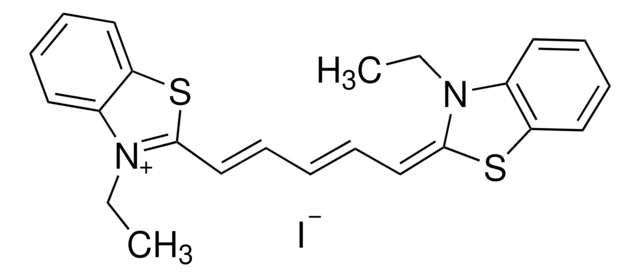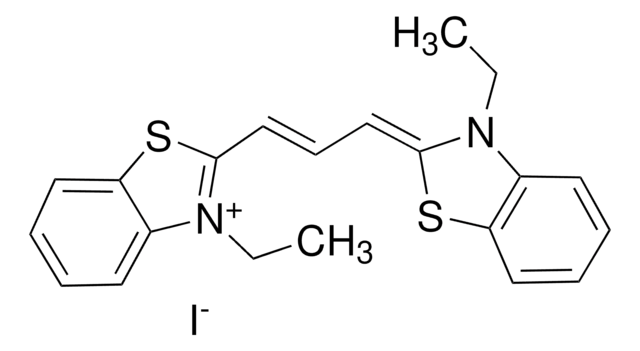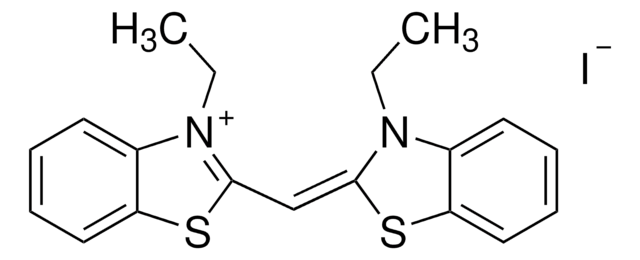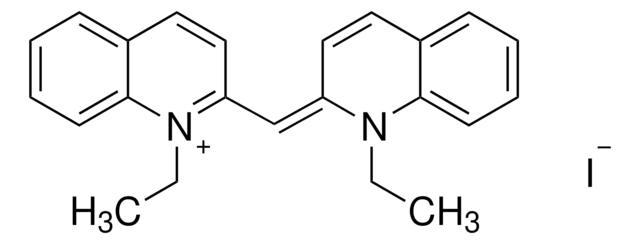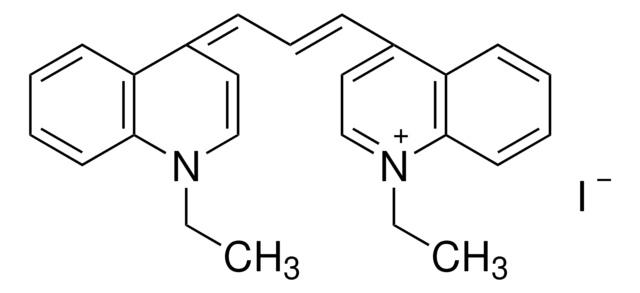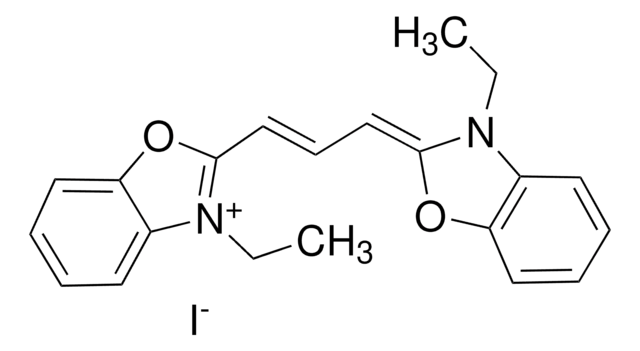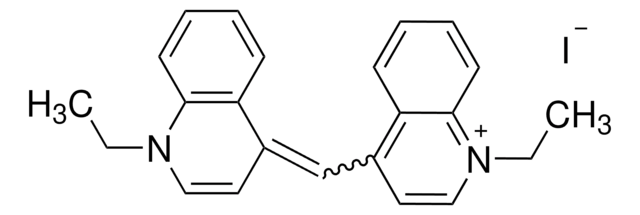Wichtige Dokumente
381306
3,3′-Diethyl-thiatricarbocyaniniodid
99%
Synonym(e):
3-Ethyl-2-[7-(3-ethyl-2-benzothiazolinyliden)-1,3,5-heptatrienyl]-benzothiazolium-iodid, DTTC-Iodid, DTTCI, DiSC2(7)
About This Item
Empfohlene Produkte
Qualitätsniveau
Assay
99%
mp (Schmelzpunkt)
211 °C (dec.) (lit.)
λmax
765 nm
SMILES String
[I-].CCN1\C(Sc2ccccc12)=C\C=C\C=C\C=C\c3sc4ccccc4[n+]3CC
InChI
1S/C25H25N2S2.HI/c1-3-26-20-14-10-12-16-22(20)28-24(26)18-8-6-5-7-9-19-25-27(4-2)21-15-11-13-17-23(21)29-25;/h5-19H,3-4H2,1-2H3;1H/q+1;/p-1
InChIKey
OYVFJKVYVDYPFV-UHFFFAOYSA-M
Suchen Sie nach ähnlichen Produkten? Aufrufen Leitfaden zum Produktvergleich
Verwandte Kategorien
Anwendung
Signalwort
Warning
Gefahreneinstufungen
Acute Tox. 4 Dermal - Acute Tox. 4 Inhalation - Acute Tox. 4 Oral - Eye Irrit. 2 - Skin Irrit. 2 - STOT SE 3
Zielorgane
Respiratory system
Lagerklassenschlüssel
11 - Combustible Solids
WGK
WGK 3
Flammpunkt (°F)
Not applicable
Flammpunkt (°C)
Not applicable
Persönliche Schutzausrüstung
dust mask type N95 (US), Eyeshields, Gloves
Hier finden Sie alle aktuellen Versionen:
Besitzen Sie dieses Produkt bereits?
In der Dokumentenbibliothek finden Sie die Dokumentation zu den Produkten, die Sie kürzlich erworben haben.
Kunden haben sich ebenfalls angesehen
Artikel
Graphene has emerged as the new wonder material. Being only one atom thick and composed of carbon atoms arranged in a hexagonal honeycomb lattice structure, the interest in this material has exploded exponentially since 2004 when it was first isolated and identified using a very simple method.
Global Trade Item Number
| SKU | GTIN |
|---|---|
| 381306-250MG | 4061833279762 |
| 381306-1G | 4061826298794 |
Unser Team von Wissenschaftlern verfügt über Erfahrung in allen Forschungsbereichen einschließlich Life Science, Materialwissenschaften, chemischer Synthese, Chromatographie, Analytik und vielen mehr..
Setzen Sie sich mit dem technischen Dienst in Verbindung.